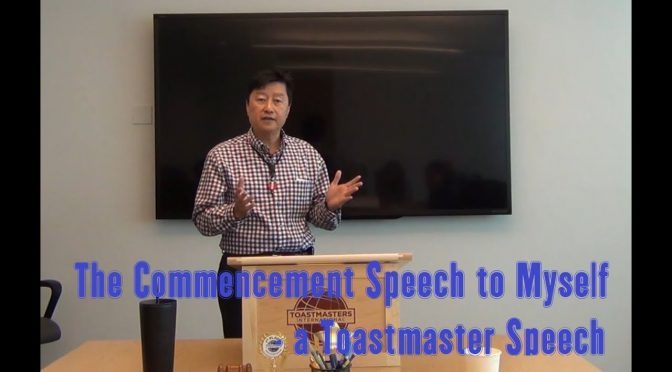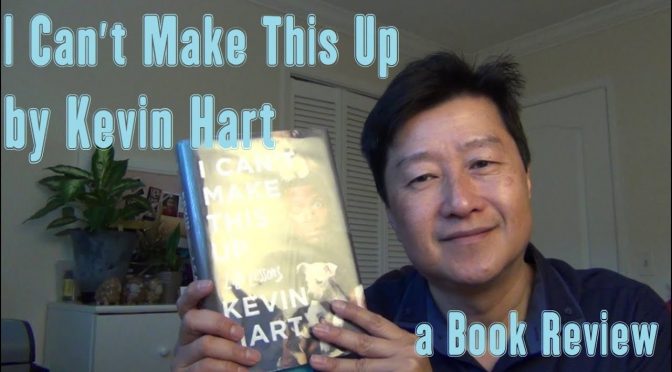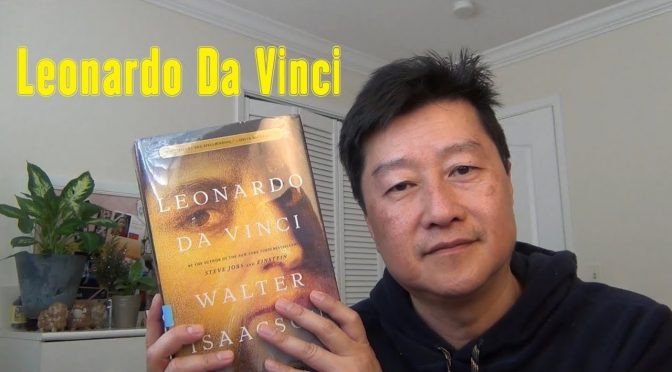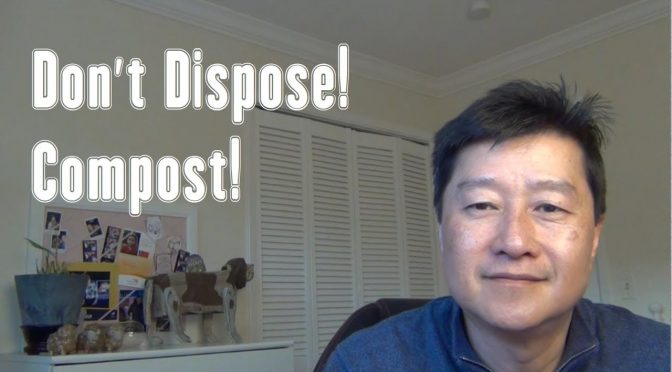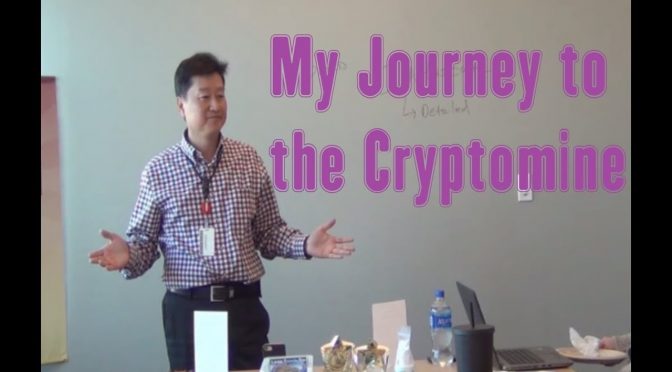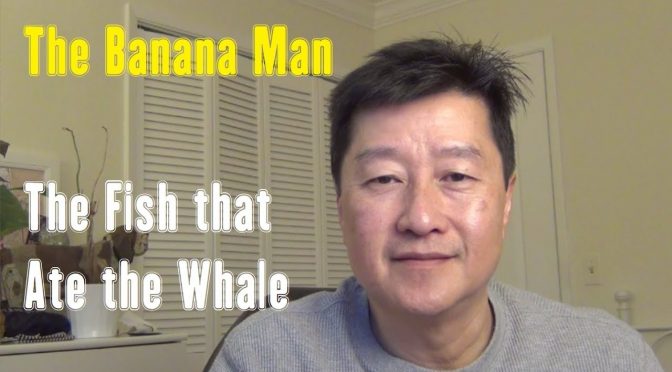I gave this speech at my Toastmasters Club. These are advises I would give to myself knowing what I know today – the “Back to the Future” scenario.
Book Review – “I Can’t Make This Up: Life Lessons” by Kevin Hart
I don’t think you can find a harder working comedian like Kevin Hart, who told his life story starting from his humbling beginning being born into a single-parent family with a religious loving mom and a supportive elder brother. Occasionally, his father showed up sober and sometimes high scouting for money from his mother.
Without his mother, I don’t think Kevin could have been as successful he is today. The work ethics and tight leash his mother imposed on him turned him into one disciplined and persistent pursuer of success. Life taught him many lessons. He learned with earnest and kept wanting more out of life.
His life with his first wife was full of violence and remorse in cycles. He finally recognized it as it was and eventually broke it off and made good his relationships with his two children and his ex-wife.
Brushed with death by over drinking, he finally acknowledged after getting his DUI that he had jeopardized his and other people’s lives by driving under alcohol and got braver the drunker he was.
Most people don’t know how difficult it is to be a stand up comedian. At least I never realized how hard it is to “kill” the audience. Started out telling jokes at a shoe store while selling shoes, he turned his talent of making people laugh into a career and kept at it despite it didn’t pay much money in the beginning as he had to borrow money from his mom and others to make ends meet. Even when he reached a certain level of reputation, he still failed to get the movie deals or Saturday Night Live position. But he kept at it and went back to basics to do stand up and took advantage of the new social networking tool when he gradually gain the following of the fans.
It wasn’t a easy journey. Any aspiring comedian-want-to-be should read this book and learn from the master’s tips like not just telling jokes but telling and making his life stories laughable so that his own name brand becomes enduring. How you tell the stories are critical to get the most laugh separates the man from the boys. It took practices and frequent failures to get it just right.
There are many good quotes that are quite inspirational like:
Dealing with failures:
“You can’t control the events that happen to you, but you can control your interpretation of them. So why not choose the story that serves your life the best?”
“Acceptance, then, is knowing that when your plan fails, or your road dead ends, it means a bigger plan is at work. And I’d rather be part of a big plan than a smaller one.”
“Every experience is a potential life lesson. Even if you don’t appreciate it at the time, each struggle in the present is preparing you for something else in the future.”
“If you’re strong enough to handle rejection without taking it personally, without holding a grudge, and without losing your passion and drive, then you’ll be strong enough to reap the rewards.”
Dealing with success:
“To win the race, then, having talent, speed, and endurance help, but those things are nothing without commitment.”
“If you want to keep growing.., you have no choice but to stretch yourself on your own and increase your thinking, your capabilities, and your accomplishments. It’s a scary thing to take the risks and make the sacrifices necessary to keep growing, but it’s better than living a life in which you don’t fulfill your potential.”
“Success is not an excuse to stop; it’s a reason to move the goalposts farther out and accelerate. There is no destination, just a journey. And that journey is to keep building on top of what I’m building.”
“If this sounds arrogant, that’s because it is. If you don’t believe in your own greatness, no one else will. You’re limited only by your doubts, your fears, and your desire to fit in rather than stand out. And there’s room in this world for all of us to stand out.”
On treating others:
“In always respecting and acknowledging people as equals going through their own struggles, whether their status in the room was higher or lower than mine.”
On humor:
“An entertainer makes you laugh but an artist makes you understand.”
“The humor was in my uniqueness, my personality – not the way I saw life, but the way I did life.”
Kevin Hart basically revealed his secrets to success in this book. I highly recommend this book if want a lot more out of your life that you don’t even know you’re capable of getting. I didn’t expect to be inspired by the book but I was.
Leonardo Da Vinci
When I say “Leonardo,” you say? Most people would say “Di Caprio.” No, today I’m going to tell you and show you the story of Leonardo Da Vinci – an imaginative, ever curious and creative genius across multiple disciplines.
Ever wondered how the tongue of a woodpecker look like? Not I but he did. He noted on his notebook to look into it.
Leonardo Da Vinci was born in 1452 in a little town, Vinci, near Florence, Italy. “Da Vinci” wasn’t really his surname but a way to identify him as the Leonardo from Vinci. He was born out of wedlock to a long lineage of notary professional. Luckily as an illegitimate son of Piero, he wasn’t able and willing to carry on the family tradition of notary.
As a “bastard,” he was never properly educated in Latin school to be a man of letters, instead he was mostly self-taught and become a disciple of experience and experiment. He lived through most of his childhood in Vinci until his step mother died in childbirth and his grandfather died shortly after. His father brought him, a teenager, to Florence, the birthplace of the Renaissance era and center of finance, trades, arts and knowledge. The city was run by wealthy bankers, then the innovators of debit-credit bookkeeping, who could afford to sponsor artists and entertainments like plays and carnivals. Think Manhattan, NY.
Recognizing Leonardo’s talents at 14 years old, his father secured an apprenticeship with one of his clients, Verrocchio, who ran one of the best workshops / sweatshops in Florence. This was where the students cranked up paintings, statutes for rich clients. When his father brought a wood shield for him to paint, he turned into an image of fire-breathing dragon-like monster with parts from dead animals like lizards, snakes, and bats.
In painting, his genius lied in his ability to see and deploy light and shade in ways that would produce the illustration of three-dimensional effect because of human eyes in resolving direct vs peripheral views.
Through his work in theatrical set, he mastered the theatrical movements, human expressions. His curiosity about human anatomy drove him to dissect at least 30 corpses. This was before refrigeration was invented so the dissection typically stopped when the smell from decaying flesh got to him. He came up with the theory about how human heart value work that was confirmed in 1950’s, more than 4 centuries after.
Leonardo was fascinated with military engineering. He conceptualized helicopter and came up with various military weapon designs like the chariots, giant bow machines.
Due to his curiosity about just everything in nature, he was frequently delinquent in delivering his work. He had to move around to find patrons. He moved around Florence, Milan and Rome.
One of his famous paining is the Last Supper. This was painted on the wall of Convent of Santa Maria delle Grazie in Milan.
In his middle age, he was frequently compared to the Michelangelo, who was 23 years younger. Both were openly gay and wonderfully talented. No wonder it was called the Renaissance.
Mona Lisa was one of the paintings that he continued to perfect until his death
In his old age, he moved to France as King Francis I became his final patron. He died in 1519 at age of 67.
Leonardo Da Vinci left us with at least 15 paintings without his signatures, 7200 pages of undated notes that left us intrigued about him as he was intrigued by nature, and wonders of the world.
Don’t Dispose! Compost! – a Toastmaster Speech
I’m very fortunate working in Milpitas, where a large landfill is located. Every day when I walk outside of this building, I’m reminded of the Milpitas Smell and the environmental hazard right under our nose. Some days more than the others. In the US, we generate 4.4 lbs of garbage per person per day. Japan has only 2 lbs. In addition to the environmental impact which we often heard of, there are economic impacts –expensive garbage utility bill and the burden of recycling fees, future cleanup fee. Some are hidden, some are outright costs.
Today, I want to make a case for everyone to do his/her part in reducing the garbage generation. The often-mentioned method is to reduce, reuse, and recycle. A large part of our garbage comes from our food or kitchen waste. My focus today is about composting your kitchen wastes. And I will introduce you to my favorite method.
There are several composting methods that I’m aware of and being practiced: traditional, vermicomposting, Bokashi composting, and natural way of dig and bury. My criteria for selecting the composting method are: Ease of setup, maintenance, and post- process, compost material, smell factor, and duration.
The traditional composting is basically pile one layer “brown”/carbon material (like dry leaves, paper) upon one layer of “green” material (like grass, vegetables with nitrogen). To compost, the aerobic bacteria are to consume the material, a process there needs to have a critical mass, roughly a cubic yard or 3’x3’x3’ to get started. This is not practical for city dwellers like most of us. I have tried to do this a couple of times but ended up with a smelly pile and had to abandon it after protests from my family and neighbors and it requires turning of the pile regularly. It’s good for industrial/commercial operation, not for small daily kitchen waste.
The next method is deploying the earthly soldiers to digest the kitchen waste: worms, which for some people, hearing the word is already repulsive, not even to turn them into “pets.” My early effort in vermicomposting resulted in a major migration of the red wigglers. Not pretty if your best kitchen wastes aren’t good enough for the earth’s “guts.” They rather die drying up on the cement floor than to put up with the “feast” you put in front of them. I did have some success later on and managed to maintain two large bins of worms for over two years. But they’re picky eaters, no protein nor meat. I set them free on my yard last year.
The dig-and-bury method is digging a trench around the drip line or garden bed and continue to bury the kitchen waste daily. Not my favorite way because of the daily work and the trip hazard.
I will focus on the Bokashi method which I have been practicing for the last 5 years.
Bokashi means “fermented organic matter,” translated from Japanese. It was discovered by Dr. Teuro Higa in Japan. By fermenting or pickling your kitchen wastes including meat, fish or almost all your organic matters, you avoid the ugly parts of common composting: smells and bugs from decomposing matters and maintenance work of turning the piles. But there is some work of burying the finished Bokashi at the end, which I do every 3 months or so.
To get started, you would need three things: 1) 3x to 5x 5-gal buckets and lids – your pickling jars – the more you’ve got the less frequently you’d need to bury the contents but more spaces you’d need, 2) a small kitchen pale to collect the daily kitchen waste and 3) the Bokashi brans, which is the “magic” ingredient/ inoculator to pickle. You can buy the Bokashi brans for $12 on Amazon, which would last you about 2~ 4 months. After the initial $25 fixed costs of the buckets and pale, the on-going cost is the Bokashi brans for $1/week. You can drop it down to a quarter/week if you make your own bran like I do. For us gardeners, we spent more than that on fertilizer or soil.
The 5-gal bucket need have some newspaper or card boards sprinkled with some Bokashi bran to keep the fluid from accumulating in the bottom. Daily or every other day, you would dump your kitchen waste into the bucket and sprinkle some Bokashi bran over it, then use a round dish plate push it in and cover it up with the plate and the bucket lid without snapping it. When it’s full, snap on the lid until you’re free to bury it. I usually accumulate 5 buckets, so I don’t need to bury them too often due to my laziness.
Just dig holes just outside the drip line of your trees or bare garden bed or raised bed, dump the contents, cover it with 4~6” of soil to avoid critters or your pets from digging it up. The bacteria or earth worms will consume the entire contents within a few months and turn them into rich organic fertilizer. It’s easy, rewarding and good for the environment. I hope you all can give it a try.
My Journey to the Cryptomine – A Toastmaster Speech
Last August I gave a Toastmaster speech on bitcoin, which stood at ~$2,700/bitcoin. It went all the way to almost $20K but today is ~$11,000/bitcoin. With that kind of swing, there’s lots of money to be made or lost. There are many ways to profit OR sustain loss from cryptocurrencies. You can buy the bitcoins or other cryptocurrencies outright and cash out when it fetches a high price – buy low, sell high. But I never believe in the get-rich quick scheme, probably because of my past record of painful experiences.
One of the “sure” ways to make money from cryptocurrencies is to mine the coins. What does it mean to mine crypto currency? The mining process is a way to earn the coin without paying for it directly.
Before we go any further, let me back off a bit and give you a bitcoin primer. The methodology applies to other cryptocurrencies. All transactions are recorded in blocks. Each block is like a page of ledger books consists of ~2000 transactions. They are chained together like the binding of a ledger book, hence the name blockchain. This is so no one can insert a “fake” block/ledger page into the book to double-spend or spend more than they have. To promote decentralization, validation or clearance of a block is performed by miners as contests to win a pot of 12 ½ bitcoins plus fees. Bingo! When first one who create a 256-bit hash/checksum that meets a certain format, usually number of leading 0’s, wins the entire pot. Then on to the next block. The difficulty of the game readjust automatically so that each block takes about 10 minutes. The reward got halved every 4 years or so.
How do the miners earn the coin? By doing the hard work or making the computers doing the work of validating the ledgers of each block of transactions once every 10 mins for bitcoin or shorter time for the altcoins. The miners’ job is to bundle all transactions into a block or a page of ledger and perform the “Proof of Work” by trying and retrying to come up with a hash code that meet a certain format: at least some number of leading zeros. In return, the first person or team/pool who comes up with the correct format shout “Bingo” or some other words get 12.5 bitcoins today plus all the transaction fees within the block. The same process goes on every 10 minutes 24×7 nonstop. This is a case for bitcoin. The other coins usually have a similar process.
I decided to try mining over the Christmas holidays because I was bored. But first, I need to decide which crypto coin I want to mine. I looked around and tried to determine which coin provides the highest return with minimal investment. Bitcoin was out of question because in order to be profitable, the equipment must be able to “hash” at TH/s or billions of hashes within a second or you may be paying more in electricity to PG&E than the reward you’re getting. The special equipment costs around $6K, too much upfront cost for my taste.
I finally decided on mining Ethereum, which would require buying a graphic card or GPU, which cost ~$400 for a popular AMD model. They were very difficult to find online or retail shops. Half of the aisle of the GPU cards were empty as of last weekend I checked. Then I bought some special extension cable to bring the GPU card outside of my home PC to supply separate power (another $50). Next, I decided on which pool to join. For Ethereum, the choice was easy. I picked the biggest. The pool aggregates all the miners’ results and winnings and share the profit the entire pool earns. If you go solo, you may be mining for years before getting the pot of money for the black statistically. I followed the directions and downloaded the software the pool requires and ran it. Tried running another recommended software still got the same bad result until I heard on the net about a firmware tweak on the GPU. Flashing the firmware could potentially risk bricking the GPU card. I hesitated and decided to take the bite. I scouted the internet for tips of what memory and CPU timing to tweak to maximize the “hash” rate. Evidently, someone has tried and probably bricked a few GPUs along the way. I tried it and got lucky; I boosted the GPU performance by 25%. Now I was ready for prime time. Let’s get the dough rolling.
For several days, I watched and observed the payout slowly creeping up. After 4 days, I was earning about $13, then the crypto market had a correction and dropped the earning down to $10 or roughly $2.50/day. Taking the electricity cost into account, I was earning roughly $1.50/day. It would take me 300 days to earn back my gear. I could scale up to more GPUs, right? I couldn’t find the same GPU for $400 anymore. It’s now $520 on eBay if I could find it.
I have tried mining one other altcoin, the payout was even worse. Like the gold rush, the winning party may end up being the one providing the shovel: GPU vendors and ASIC chip vendors.
The good news is that I can now sell the GPU on eBay and even make $100 back. But more importantly, I no longer have to hear the loud fan noise in my den. Ah! A peace of mind of no mine!
The Banana Man – The Fish That Ate the Whale
This story is based on the book “The Fish That Ate The Whale” by Rich Cohen.
I’m going to tell you a story about this guy, Sam Zemurrary, the Banana Man.
Some interesting facts about banana: banana is technically not a fruit but a berry that grow on a herb plant, not tree, and is tallest grass and largest plant without a woody trunk. Banana plant grows from a rhizome (like orchid or lotus) and has no roots and no seeds so it can only be propagated from a cutting. In other words, a banana species are all clones. This means, one disease that kills one banana plant can wipe out an entire species due to lack of genetic diversity. This has happened to a few species like “Big Mike” and “Cavendish.” So enjoy your banana while you can!
Enough about banana but why does it have to do with Sam Zemurray, the Banana Man? I don’t think there another person whose story is more entangled with a fruit or a berry than he was. Let me tell you his story.
Sam Zemurray, a Russian Jew, arrived in America in 1891 at age fourteen. He was tall, gangly and penniless. He saw a banana in 1893 for the first time, 20 years into American banana trade during the hay day of the steam-engine boats. Banana just became a popular, exotic imported luxury fruit. It can’t be easily grown in the US and even more difficult to transport due to its short shelf life and natural vulnerability. The 6-ft-3 Zemurray started out as a fruit peddler, a banana hauler, then a dockside hustler. He settled in New Orleans, got married at age of 31. His daughter was born a year later. He wanted to give her the best he could offer like most immigrant parents. To do that, he needs to grow his company and his supplier base. Where? Central America.
The first time Sam Zemurray visited Honduras, he bought 5000 acers of north-coast “junk” land immediately for $2000, all borrowed. Then he borrowed more and bought more land. Leveraging his knowhow from growing up in a Russian farm, he turned the land into a fertile banana farm. He bribed the Honduras government officials into giving him the best tax break. When the Honduras government tried to back out of the tax exemption sweet deal, he organized a mercenary team and overthrew the government. He ended up with an even better tax break.
When he expanded his plantation into Guatemala, he started butting against United Fruit’s territory. United Fruits was the biggest banana company at that time. As the conflicts between the two companies escalated within Guatemala, the US government stepped in to avoid destabilizing the region. Urged by the US government, both companies were forced to merge and occupy 64% of banana market share with anti-trust immunity. Zemurray walked away with shares of United Fruits, worth about $30M in 1929, or $420M now.
Was he ready to retire? Not quite. The Great Depression hit, he saw his shares of United Fruits dropped to only 10% or $3M. He came up with plan to turn around the company. When he presented his plan to the Board of Director, he was mocked, and turned away. A few months later, he returned to the Boston headquarter with proxy votes and fired the board and the CEO. Zemurray took over United Fruits as its CEO.
Then World War II happened. The banana ships were being sunk by German’s U-boats during transport. If that wasn’t bad enough, a personal tragedy hit him hard when his son’s, Sam Zemurray Jr’s plane went down and died in Africa serving as an Air Force pilot during the war. He was heart broken and started searching the true life meaning.
Up to 1948, he was never involved in any political advocacy for Jews. Surprisingly, he stepped down from his CEO position, and devoted his time to making sure Israel secured its statehood with 2/3 of the United National’s General Assemblies by influencing or bribing the several central America countries to vote yes. The state of Israel was born.
Zemurray eventually returned to United Fruits, which was forced to break up by US government to 3 smaller companies after involving itself in Central America conflicts during the Communist uprising – central character, Fidel Castro. Today we see pieces of United Fruits in Dole, Del Monte and others. United Fruits eventually became Chiquita as we know today after several ownership changes.
Samuel Zemurray died in 1961 at the ripe age of 84 with an estimated fortune of $30M, a big chunk of which he donated to local universities like Tulane.
Is Sam Zemurray a story of rages-to-riches immigrant’s fulfilling the American dreams, or a shrewd businessman sparing no means, mercy to get the results mimicking American’s aggression in Central America, or a man truly living life to its purposes? I would say, “all of the above.”
An iPhone Sound Dam – a Learnbyblogging DIY Project
Here is a quick 3D printed object to solve your common problem – sound directed to the wrong area – so you don’t have to cup your phone when you talk or watch your favor video or doing Facetime on your iPhone.
You can download the 3D file here:
https://learnbyblogging.com/uploads/iPhoneSoundDam2.stl

